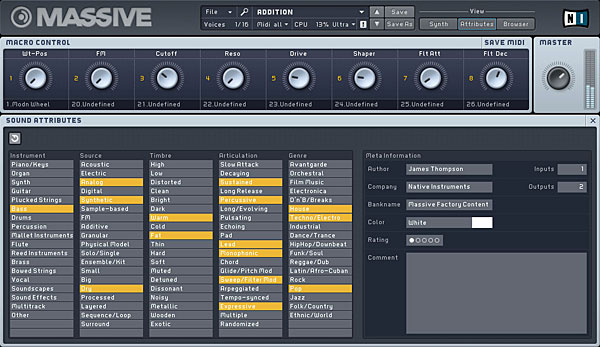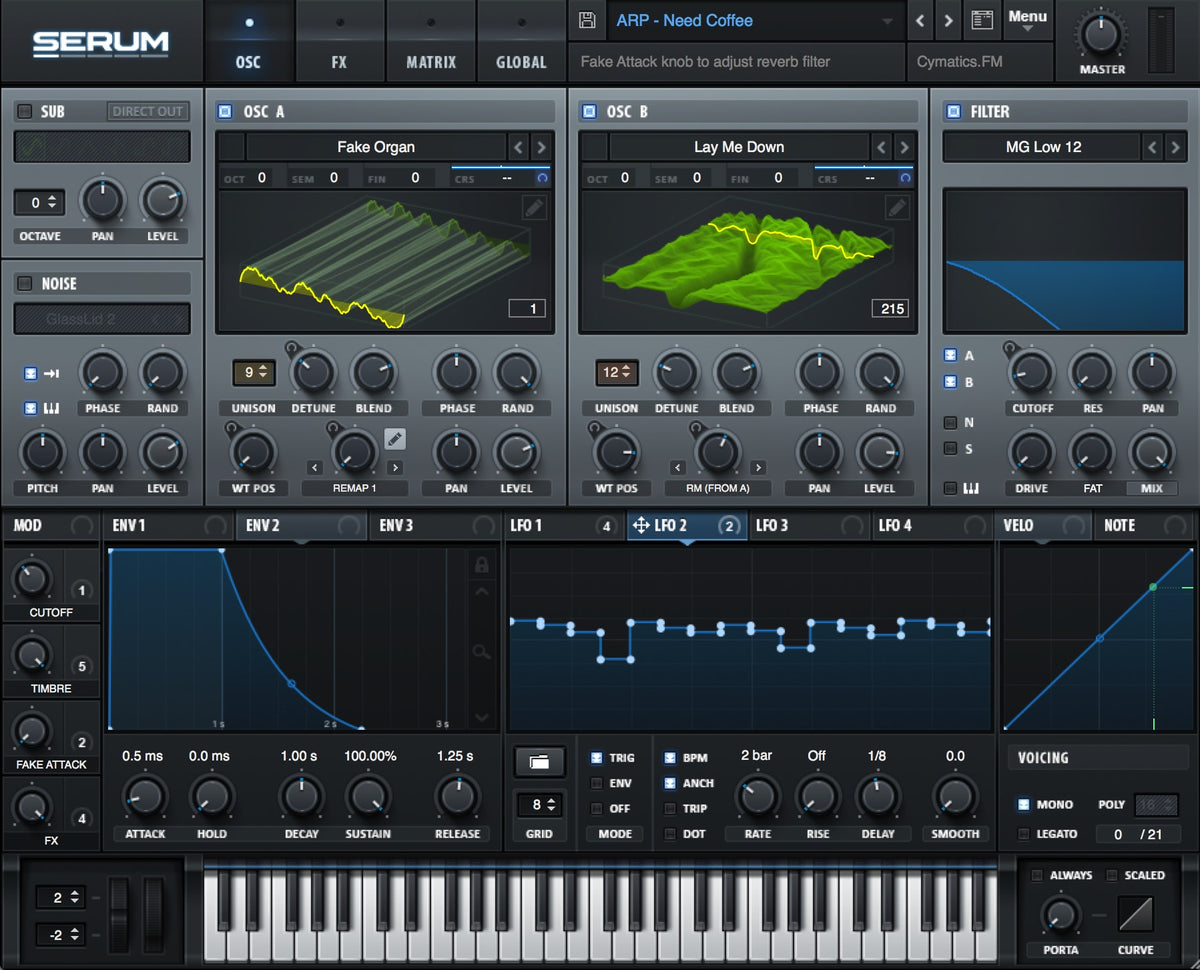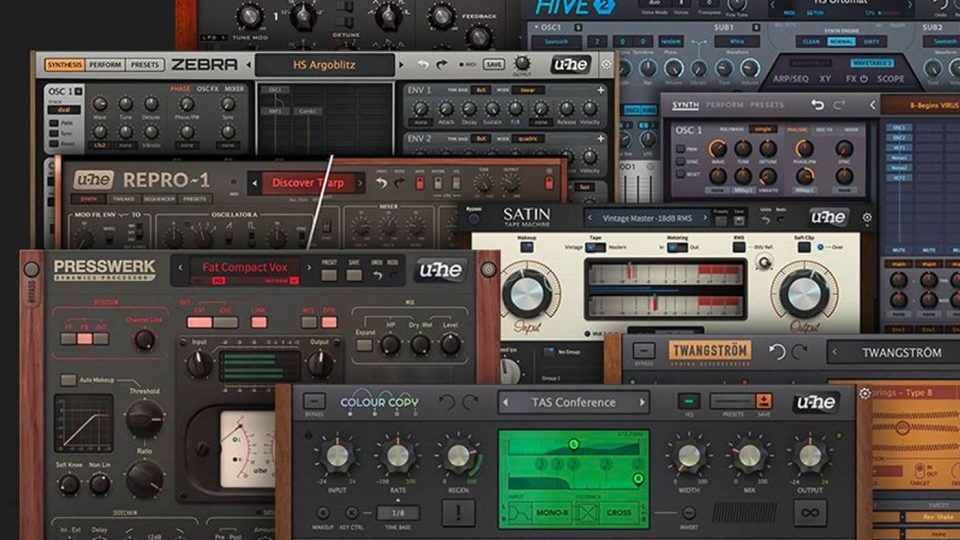What are Synth Presets?
The humble synthesizer has come a long way since its inception. While early synths from the likes of Moog and EMS offered endless tweakability the sounds they created could not be saved or recalled. By the late 1970s, preset banks were starting to become a popular synth feature. Now, with the advent of VST synths, we take long preset lists very much for granted. They offer convenience as well as a great aid to workflow. In this guide, we delve into the heart of VST synthesis with a focus on this most useful of facilities.
The Virtual Studio Technology (VST) Synth in a box
Unlike their hardware counterparts, VST synths exist in the form of software plugins that seamlessly integrate into Digital Audio Workstations (DAWs). This digital frontier not only provides a cost-effective alternative to physical synthesizers but also opens up a world of flexibility and convenience for music creators.
VST synths are versatile tools that can mimic traditional instruments or venture into the uncharted territory of entirely unique sounds. Their graphical user interfaces (GUIs), displayed within the DAW environment, offer an array of parameters that define the sonic characteristics of the generated sounds. These parameters include oscillators, filters, envelopes, and modulation sources – the building blocks of digital sound shaping.
The Art of Sound Design.
Sound design, an integral aspect of music production, comes to the forefront when working with VST synths. Virtual synths invite you to manipulate the parameters within a synth to craft unique and compelling sounds. For beginners, this might initially seem like a daunting task. However, it’s the key to unlocking a realm of creativity.
Sound design in VST synths doesn’t necessarily demand an in-depth understanding of every parameter. Instead, it encourages exploration. Beginners can start by tweaking basic settings, gradually developing an intuition for how changes in each parameter affect the overall sound. This experimentation lays the foundation for the creative journey ahead.

Presets: A Shortcut to Sonic Exploration
As beginners navigating the intricate world of sound design, the concept of presets emerges as a valuable ally. VST synth presets, in essence, are pre-configured settings that encapsulate a particular sound. These presets act as a shortcut, providing instant access to tailor crafted tones without the need for extensive parameter tweaking.
For those just embarking on their music production journey, presets offer an inviting entry point. They serve as a great place to start when experimenting with sounds. They can also help to reveal sacred synth knowledge and aid your understanding and potential machine mastery. By loading a preset, users can immediately grasp the potential of the synth, gaining insight into how oscillators, filters, and other components interact to create specific sonic textures.
Types of VST Synth Presets
Presets within VST synths can be categorized into two main types: factory presets and user presets. Factory presets are those that come pre-installed by the synth manufacturer. They showcase the capabilities of the plugin, serving as a demonstration of the breadth of sounds achievable with the given instrument. These presets often span a range from emulating classic instruments to pushing the boundaries of experimental soundscapes.
On the other hand, user presets are custom configurations that have been saved for future use. This opens the door to personalization and experimentation, allowing users to build a library of go-to sounds tailored to their unique style.
Navigating VST Synth Presets

Loading and saving presets within VST synths is a straightforward process, but understanding how to navigate this terrain is crucial for a seamless workflow. Most VST synths feature intuitive interfaces where users can easily browse, select and load presets. Additionally, modern synthesizers often come equipped with preset management systems that help to organize preset sound libraries efficiently.
The process of saving user presets is equally straightforward. Once a user tweaks the synth’s parameters to create a desired sound, they can save these settings as a custom preset. The save preset button is often represented by the infamous floppy disc icon. This not only streamlines the creative process but also provides a way to build a personalized arsenal of sounds that can be easily recalled in future projects.
The World of 3rd party Synth Presets
In recent years, the availability and diversity of synth presets has grown, thanks in part to the rise of online marketplaces and communities. Musicians and producers now have access to an extensive array of commercially available presets, covering every possible sound and style. In the same way royalty-free audio samples can help kick-start musical ideas, presets can offer similar compositional inspiration. In fact many sample packs will provide the presets for sounds contained in the audio samples. This way users have the option of adding their own melodic elements, helping them blend perfectly with the sample.
While most VST instruments offer the option of loading custom presets, certain VST synths have proved more popular than others for 3rd party preset creation. Serum is very much the leader of the pack when it comes to preset availability. Other synths popular with 3rd party preset creators include Sylenth1, Massive, Spire, Pigments, Diva, Vital, and Phase Plant. These synthesizers have garnered popularity not only for their robust sound engines but also for the vibrant communities that have formed around them. The result is a flourishing marketplace where sound designers share their creations, providing users with a wealth of options.

Advantages of Using Presets
For beginners in the realm of music production, the advantages of utilizing presets in VST synths are manifold. Firstly, presets serve as invaluable time-saving tools. In a world where efficiency is paramount, being able to access a rich array of sounds with a simple click can significantly expedite the creative process. Instead of grappling with complex parameter adjustments, beginners can focus on the broader aspects of composition and arrangement. While certain producers may be a tad sniffy when it comes to preset use it’s worth remembering that the people who listen to your music will neither know or care if you choose to dial up ‘fuzzbass 03’.
Moreover, presets act as learning resources. By deconstructing presets, beginners gain insight into the inner workings of a synthesizer. They can observe how different parameters contribute to the overall sound, providing a practical education in sound design. This hands-on approach allows aspiring producers to familiarize themselves with the intricacies of synthesis without feeling overwhelmed. And if you really start to master the sonic architecture of a VST becoming a sensei of sound then you could even consider sharing or selling your presets.
Limitations and When to Move Beyond Presets
While presets offer an excellent starting point, it’s crucial to acknowledge their limitations. Relying solely on presets may lead to a somewhat formulaic approach to music production. To truly stand out and cultivate a unique sonic identity, beginners should gradually transition from passive preset users to active sound designers.
Understanding the parameters within a VST synth and experimenting with them unlocks a deeper level of creative control. As users become more adept at shaping sound from scratch, they can tailor their compositions to match their artistic vision more precisely. Presets, in this context, transform from crutches into stepping stones, providing the foundation upon which users can build their distinct sonic landscapes.
And if you really start to master the sonic architecture of a VST becoming a sensei of sound then you could even consider sharing or selling your presets
Conclusion
In this exploration of VST synth presets, we’ve hopefully demystified the role of presets, showcasing them as a handy shortcut to sonic exploration as well as an avenue for learning.
For beginners, the journey into music production is often paved with curiosity and the desire to simply create. Presets can act as a gateway, helping you to quickly turn your creative ideas into musical realities. Don’t just settle for the first sound you come across. Spend some time auditioning different sounds. And when you happen upon a winner remember, this need not be the end of your journey. With the endless flexibility available within modern VST’s there’s nothing to stop you from providing some additional tweakage.
Remember – RouteNote Create subscriptions start from as little as $2.99. You also get 10 FREE credits to spend on samples along with access to our FREE sample pack bundle when you sign-up!
